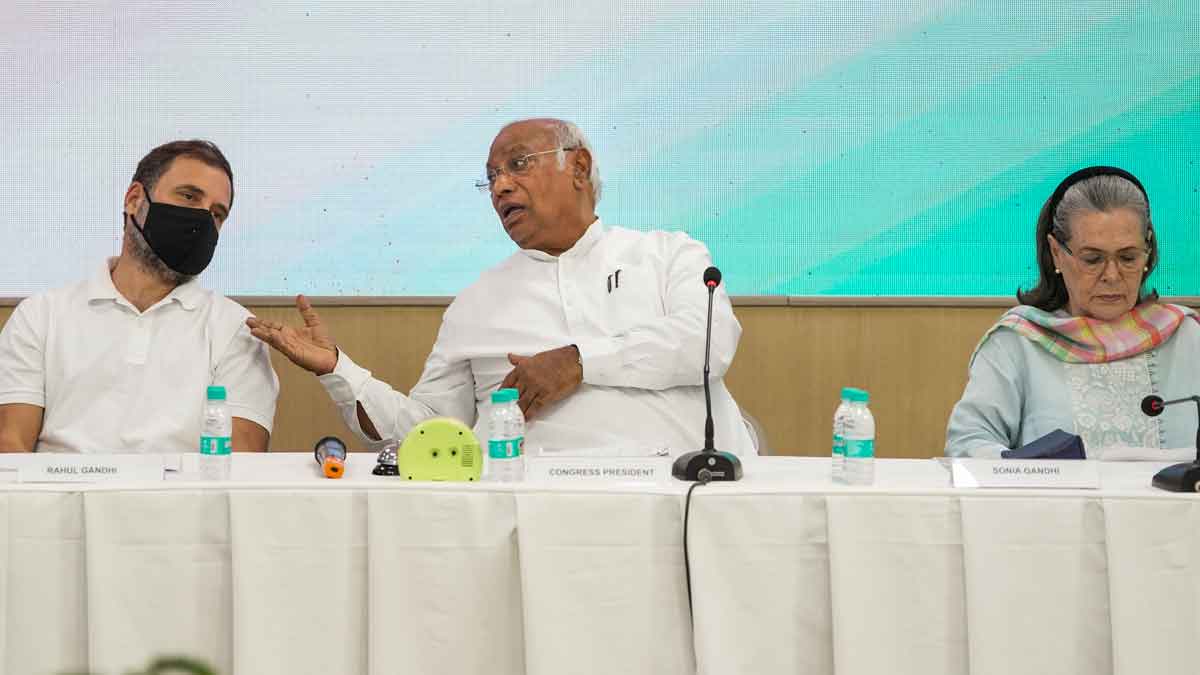With change in district presidents, Congress could formalise different intra-party structures
 Congress President Mallikarjun Kharge, Congress Parliamentary Party chairperson Sonia Gandhi and party leader and LoP in Lok Sabha Rahul Gandhi during the Congress Working Committee (CWC) meeting, in New Delhi | PTI
Congress President Mallikarjun Kharge, Congress Parliamentary Party chairperson Sonia Gandhi and party leader and LoP in Lok Sabha Rahul Gandhi during the Congress Working Committee (CWC) meeting, in New Delhi | PTI
As the Congress party is on its way to decentralise power and empower district presidents, the implementation of its plans could greatly institutionalise several structures within the party. It would also primarily revitalise its war rooms across the country. The idea of a central war room is to lay an active network of leaders who would oversee all the activities in the respective districts.
The party plans to constantly delegate tasks to its footsoldiers. The more work during non-electioneering time will keep all the structures of the party ticking.
This includes deploying more active nodal officers at the district level who will almost act parallel to district presidents and directly link the district war rooms with the central one through a permanent communication line, ensuring a structured feedback mechanism and daily updates.
"If the war room works 24/7, it is definitely going to benefit the functioning and performance of district committees," says Shiju Joy, a cluster head in the national war room.
Although district war rooms existed earlier, they were mostly operational during elections. The line of communication with the central war room was also not clearly defined. It was more patchy and poorly structured, revealed an insider.
Moreover, there was no established model on how a district war room should function. Consequently, some would gain power and become strong, yet remain hollow and corroded by inactivity, the party insider said.
The new strategy could turn the Congress grassroot structures from an event-driven network, focussing on elections, to an active force throughout the year. The war rooms would also provide a window to help address grievances from time to time rather than leaving it to create a situation when it either becomes binding or inescapable.
"When some issues crop up at the local level within the party, it can create resentment among rank and file if left unaddressed, a Congress leader says, "But when it is addressed immediately it lifts the morale of cadres and leads to positive communication."
Formerly, district presidents had little power in appointments at the grassroots, which were either tasked to the state unit or AICC, at times leading to factionalism. Now, the district presidents are being made more autonomous and conceived to become a driving force in their respective districts.
India